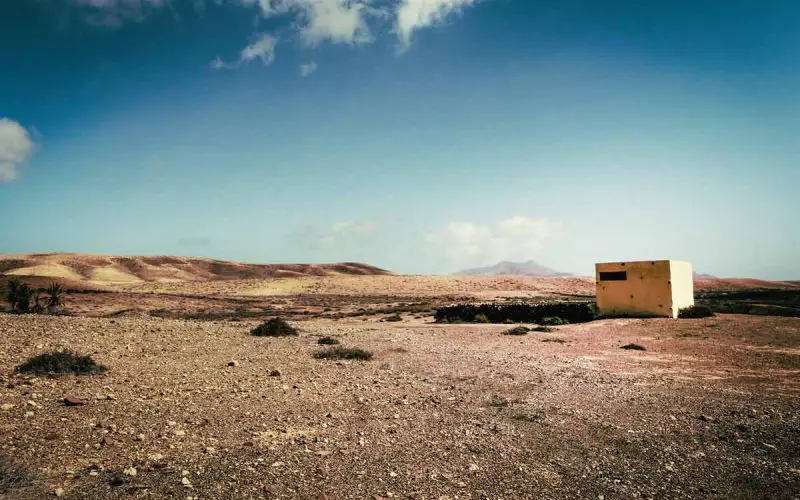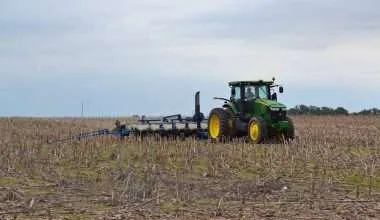Table of Contents Show
Flooding has become more frequent and severe around the world. This isn’t said to be an isolated pattern: Romania, Bolivia, and Nicaragua have all seen huge rainfall and subsequent urban flooding reach severe levels never seen for the past 100 years.
While urbanization has made forests more vulnerable to flooding due to increased prevalence of impenetrable ground surface; rural areas have also become more vulnerable to flooding than ever before.
Causes of Soil Damage
One of the factors of urban flooding includes increased livestock production, leading to dense soil so that water cannot seep into the ground.
Another reason could be the practice of monoculture farming which causes erosion of land’s topsoil, stripping the absorption capacity of the land.
Finally, we have global warming, that induces higher temperatures in the region and causes excessive evaporation of moisture from seas, rivers, lakes that return to land by rainfall.
Tips to Repair Damaged Soil for Sustainable Garden
Today, we will provide you with ways to promote and perform sustainable farming in order to prevent damage to the precious soil of your land.
This will even help you repair and improve your soil health!
1. Replenish Nutrients back into the soil
The floodwater tends to cause erosion of the top soil that is rich in humus and fertility. As it does this, the flood also removes nutrients, thereby depriving plant roots from having access to minerals necessary for plant growth.
Use of organic compost (manure) is one of the best ways to replenish soil.
Composted chicken manures are another alternative to help restore minerals and nutrients into your precious soil that is vital to plant growth.
Animal manure can also be used. However, livestock manure should be left for 90 days before it can be applied to agricultural land. This is to allow composting bacteria to develop nitrogen levels without causing any significant toxicity.
P.S: You can read more about composting in the following article: Sustainable Farming; Principles, 10 Methods and 14 Benefits!
To read all articles where we’ve written about composting, I’d advise a quick search like this one.
2. Land drainage
Before making any drastic changes on your land, you should allow your soil to be drained gradually and naturally. Usually, it can last for a few days.
However, if your soil contains more clay as compared to sand or loam; the process can then be extended for weeks. This is because clay is more compacted and doesn’t move so easily to give space for water to move through.
Sometimes, the soil gets so saturated with water that there is not enough space for oxygen to get to the soil. This creates anaerobic conditions in the soil and impacts soil fertility.
In such cases, you will also need to explore channel digging to promote water drainage, because this might be the time your plant starts to die.
3. Neutralize your soil
After flooding, soil fermentation can lead to the development of an acidic environment. Such an environment is counterproductive to plant growth. Addition of organic lime [Ca(OH)₂ with pH 12.8] helps to neutralize soil pH and return it back to neutrality, without costing much.
To show you how detrimental soil acidity is to soil fertility and the importance of lime, here’s a table!
| Soil pH | Plant growth, soil functions and Effects of Liming |
| More than 5.5 (more like neutral pH) | No effects on crop yield and soil fertility. Lime will have an affect beyond 10cm. |
| Less than 5.2 | Effectiveness and numbers of Rhizobia Bacteria (nitrogen-fixing) is reduced. Liming increases endurance and effectiveness of Rhizobia, increasing Nitrogen fixed in. |
| Less than 5.0 | More than what happens below 5.2, there could be molybdenum deficiency in Legumes which are N fixing. Rhizobium bacteria NEEDS Molybdenum to make amino acids and proteins to be able to fix nitrogen. |
| Less than 4.8 | In some plant species, Aluminum (Al) starts to precipitate and convert from a harmless solid mineral into a water-soluble form, which is toxic to root-growth. Crop yield reduced! |
| Less than 4.5 | Nitrification is extremely slow at this stage. Rhizobia are pretty much ineffective at this stage. Al becomes much more soluble and highly toxic. |
| Below 3.8 | Soil overcome with acidity and loses its ability to buffer against pH change. Only sand is left of the soil, soil damaged beyond repair. |

This might help you understand how bad it can become! So remember to neutralize your soil pH to promote soil health and plant growth.
Take home message: Lime movement will only happen if the pH is kept above 5.5!
4. Mulching
Soils that are bare, do not pan out well for healthy lands. Therefore, it is necessary to carry out heavy mulching of your damaged soil with straw, seaweed, or chopped leaves.
Mulching will provide protection to soil supplements you have administered. You can also enhance more mineral levels and ideal growing conditions for your crops.
5. Bio-remediation
Bioremediation is an effective waste management process that uses live organisms to remove any harmful pollutants that are present in your soil as a result of flooding. These contaminants include heavy metals, coal tar, petroleum, sewage sludge, and harmful hydrocarbons.
The biggest benefit to bioremediation is its contribution to the environment and effective cleaning of herbicides and insecticides.
Conclusion
The practice of intensive agriculture can leave rural areas at a higher risk of becoming flooded. But if the above steps are taken, you can begin to process replanting of any damaged crops. Flooding will also occur in the future, so it is necessary to have knowledge regarding which plants are more resilient to floodwaters and are preferable to plant on your land. Happy farming!






